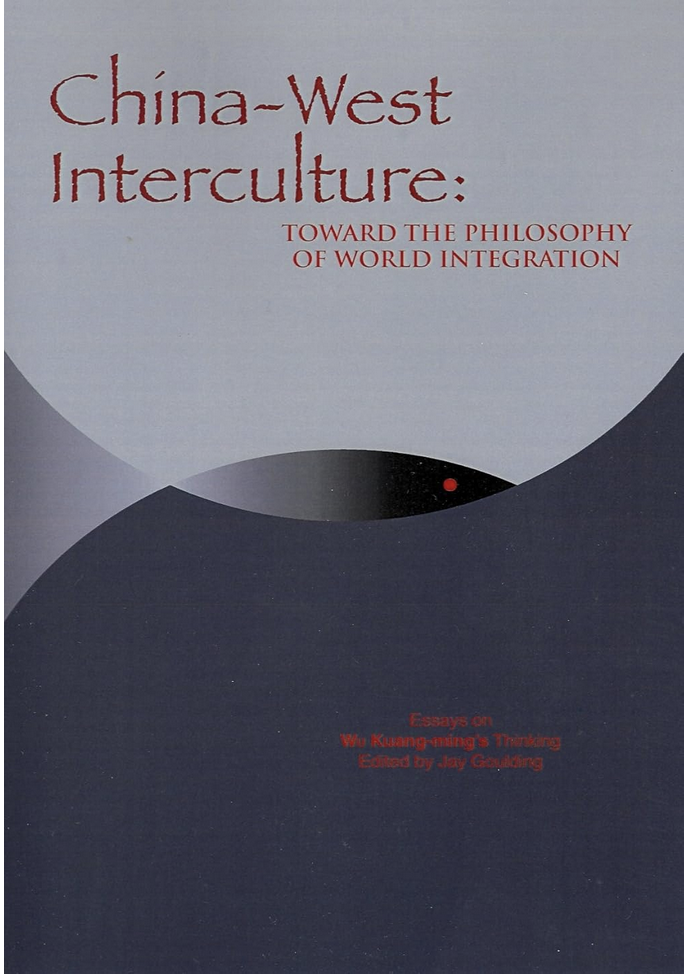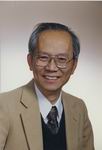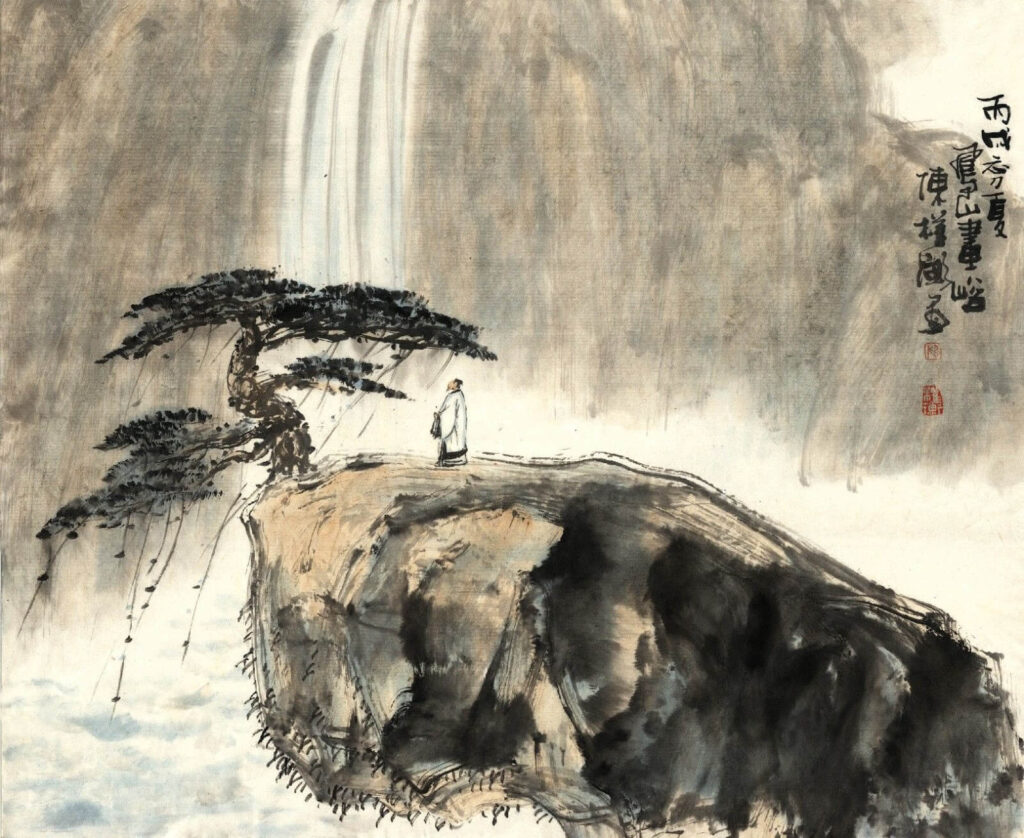
“For Zhuangzi, as for the later Wittgenstein, natural language is groundless. It is a vehicle of communication and intercourse that is a natural to man (and woman) as chirping is to birds and barking is to dogs. How much of it makes sense? How much of it is purposive? How much of it is encoded speaker intentions to be decoded and replied to by a listener per se? Zhuangzi, and Wittgenstein, thus reveal and unleash the functionality and multiplicity of language to press it to – and beyond – its limits, … opening the doors to self-discovery and creativity … And liberating! Zhuangzi’s goblet words thus [lead to] the wisdom of uncertainty.” (Kirill Ole Thompson)
The Correspondence Theory of Language
The correspondence theory of language states that the truth of a statement is determined by how accurately it describes the world. In mainstream Western culture, the assumption is that the words we use to communicate represent the things and beings we encounter in the world.
In fact, this claim originated in Greece in the mind of Plato, who taught it to his disciple Aristotle. Plato defined “what is” as being contained in a transcendental realm of Ideas, pre-existing Forms of which what we see is a copy. Aristotle added that we could discover the Ideas by observing the natural world, and inferring the transcendental Ideas from their manifestations in reality. This view is the original philosophical definition of the word “metaphysics,” that which is beyond the physical world we experience. It emerged at a specific moment in the cultural history of the West – the fourth century BCE – and marked a turning point in the development of its intellectual and religious life. It is so fundamental to the Western way of thinking that few have ever doubted that it is what “thinking” as such means rather than being only one particular mode of thinking. And among those who have come to doubt it, few are able to extricate themselves from it.
In his deconstructive analysis of the Zhuangzi, Youru Wang writes: “Zhuangzi refutes the correspondence theory of language. He refuses to surrender himself to the descriptive, cognitive or referential use of language … to overcome the direct mode of linguistic discourse, and best serve the primary purpose of his soteriological or therapeutic practice” (Wang 2003)
Though this view was not unknown at the time of Zhuangzi, as a Daoist, Zhuangzi did not share it, and in fact it never became mainstream in traditional China. For the followers of the Dao, there is no “ideal” static order embodied in words. The ten thousand things arise for us, as it were, from the Dao, shaped by the interaction of yin and yang, as first described in the Shijing (The Book of Odes), one of the Five Classics, said to have been composed between the eleventh and seventh centuries BCE and compiled by Confucius. Yin and yang act in a way comparable to the polarity of the positive and negative ends of a magnet to guide us on the Path to follow in order to lead lives conducive to the health of the natural world as well as the physical and mental health of the individual. For the individual, however, a practice of self-cultivation is necessary to align oneself with the ever-changing web of interconnected relationships that we call reality. This alignment is not, as in the case of metaphysics, a matter of words and knowledge. It is a matter of actions, that is, of adjusting one’s actions in relation to the world. Knowledge can only arise from the actual change in one’s behavior in accordance with the “intimations” of the Dao. The role of the sage, according to Zhuangzi, is to guide students of the Way in the practice of self-cultivation to enable them to align with the Dao, and for this he had to use words creatively. More than two millennia after the birth of metaphysics in Greece, Ludwig Wittgenstein (1889-1951), more precisely the later Wittgenstein, also moved away from the correspondence theory of language, and it is from this perspective that the thoughts of these two men can be compared.
Misunderstandings of Zhuangzi
Commenting on Kuang-ming Wu’s scholarship in China-West Interculture, Kirill Ole Thompson explains that, even during the early Han dynasty, Sima Qian had misidentified Zhuangzi as the author of “certain definite teachings and doctrines.” Over the centuries, scholars have treated “the Zhuangzi as a commentary on the Laozi, turning Zhuangzi into a Zen master or an American Transcendentalist, viewing Zhuangzi as a decadent egoist, an advocate of self-abandonment and hedonism, a skeptic or nihilist, a proto-religious Daoist in search of immortality, a prudential aphorist; finally, simply treating the text as brilliant but poetic and imprecise – and in need of ‘philosophic reconstruction’. Wu diagnoses this last misundertanding as stemming from misplaced “cognitive literalism.” Cognitive literalism involves reading the text as if it were animated by a series of propositions, implicit or explicit, to be reformulated and explicated.”
An Approach to Understanding Zhuangzi

“If the Zhuangzi is not presenting teachings or a position, what is it doing?” Thompson reports that “Wu Kuang-ming avers that Zhuangzi practices a sort of “evocative indirection,” intended “not to convey itemizable propositions but to goad the reader into self-scrutiny and awaken him into becoming himself in the world.” That is, Zhuangzi is practicing not the ordinary direct communication of imparting or conveying cut-and-dried information or knowledge but the more poetic indirect communication of evoking or even opening into each other. Wu grounds his account in the Zhuangzi’s self-ascribed use of ‘goblet words’ (zhiyan).”
Burton Watson, translator of The Complete Works of Chuang Tzu, described Zhuangzi’s rather unique style as follows: [he] “expounded [his aspirations] … in odd and outlandish terms, in bombastic language, in unrestrained phrases, abandoning himself to the times without partisanship, not looking at things from one angle only. He believed that the world was drowned in turbidness and that is was impossible to address it in sober language. So he used goblet words to … give a ring of truth … Though his writings are a string of queer beads and baubles, … yet they are crammed with truths that never come to an end.”
This “not looking at things from a single perspective” has led many scholars to claim that Zhuangzi was a skeptic, an anti-rationalist, or a perspectivist. This is certainly the feeling one gets from reading his famous chapter on “Rambling without a Destination”: the perspective of the big bird contrasts with that of the small quail, and one gets the impression that his attention is shifting back and forth quite wildly!
Thompson comments: “For Wu, these beads and baubles of apparent nonsense are intended to awaken the readers to their own cache of absurdities, within and without – thereby releasing the readers into their inner sense, into themselves (Wu) … Goblet words operate by tipping when full and righting themselves when empty such that, they adapt to and follow along with the fluctuations of the world … in order to arouse an appropriate discernment and response (Wu). They “pour out endless changes” (Watson). Goblet words are not ‘about the facts’ but about touching the reader; they serve to short-circuit the reader’s habitual thinking and stir reflection in various ways, e.g., by fluidity, irony, paradox, transgression. Goblet words thus are intended to provoke and induce the reader to become a freer spirit by questioning her customary categories that delimit her and set things part, thus releasing herself to a new sense of togetherness and harmony (Wu). They ‘tip toward us to alert us back to ourselves’ … [and] call us to come alive, not just to them but to ourselves and the world” (Wu).
Zhuangzi’s wild shifting back and forth is not, then, an argument to support a “thesis.” It is, instead, a deconstruction of our “habitual thinking,” through a shock strategy, a method that may have inspired Zen precursors such as Mazu and Linji to use insults and blows to trigger an awakening experience in their disciples. In the case of Zhuangzi, however, Thompson tells us that “Wu argues that the text becomes a shadow of the reader, ‘reflecting the reader’s own creativity.’ The reader becomes ‘a penumbra that clarifies the contour of the shadow [text]’. Yet, the sensitive and discerning reader will ‘tune in to resonate with the Zhuangzi [authentically]. Resonance originates meaning, rendering discourse meaningful … To tune into a resonance is to enter a universe of discourse in which significant dialogue resides. The universe here is the field of interaction of meaning; to live in it is to have one’s thinking sympathetically criticized” (Wu).
By deconstructing our habitual way of thinking, Zhuangzi liberates us and creates space for us to resonate with his own sense of freedom, which is one of the characteristics of an enlightened sage. Thompson adds that in Wu’s text, this resonance “dovetails with the understanding that Classical Chinese view that the world is dynamic and in constant change – in some respects patterned and cyclical and in other respects chaotic and unfathomable.”
Goblet Words – to Toast the Myriad Transformations!
“Goblet words are presented in Chapter 27 after, and in contrast to, two other kinds of words or expressions used in persuasive conversation ‘imputed words’ yuyan (sometimes rendered ‘lodged words’) which are persuasive nine times out of ten, and ‘repeated words’ chongyan (sometimes rendered ‘double-layered’ words) which are persuasive seven times out of ten.” Imputed words are what we call “quotations,” the use of an authoritative voice to support our claim, while repeated words are just repetitions. These rhetorical devices were used by Zhuangzi’s contemporaries, but it seems that the use of goblet words was specific to Zhuangzi. Because of the“shifting and multiplying of meanings and viewpoints,” Wang tells us, “the determinate role of the author disappears.”
Also significant is the fact that, while imputed and repeated words are “somehow external and set apart from the case or matter they are ‘about’, goblet words function internally to and at one with the case or matter or event … Rather than indicating eternal abstract categories and properties under which people, things and events are judged to fall in propositions; words and expressions more originally are basic interpersonal tools of conversing and of grasping and managing the changing, connected nexus of events they are brought into interaction with through speech. We do not simply register and identify persons and events according to a static framework. We are actively involved in the stream of life and are deeming and determining, making and shaping each other and phenomena and events as we encounter life anew everyday.” The Daoist urge to return to the concreteness of life is like a riff, one of the classic riffs heard in jazz, not only repeated, but recreated in new contexts, which has guided the practice of Daoist self-cultivation through the centuries.
Illustrative Anecdotes
Thompson provides five texts as illustrations to help us better understand how Zhuangzi’ goblet words work. Unfortunately, I can only cite one here because this page is already quite long. So I chose Zhuangzi’s second dialogue between Penumbra and Shadow. The first dialogue is in Chapter 2, just before the final paragraph about Zhuangzi dreaming that he is a butterfly. Here is how Thompson summarizes it:
“The new dialogue is deeper than the previous one, which concluded that all sorts of behavior are reflexive, i.e., not ultimately voluntary or self-determined, not unlike the behavior of a shadow vis-à-vis its object. The Penumbra here … is discursive and questioning, and asks about Shadow’s various motions. Shadow’s reply reflects the notion of responsive activity expressed earlier in the passage about ‘goblet words’: Things just happen in a sequence, in a context, in an unfathomable larger nexus; one just follows them in conduct: “I’m the shell of the cicada, the skin of the snake – something that seems to be but isn’t. In firelight or sunlight I draw together, in darkness or night I disappear … If those things come, then I come; if they go, then I go with them” (Watson). One lacks self-identity, but reflects a larger concatenation of phenomena that conditions one’s very presence (you) and absence (wu).”
The later Wittgenstein also rejected the correspondence theory of language and saw words as “tools” arising from actions
The paragraph on imputed words, repeated words and goblet words as “basic interpersonal toolsof conversing and of grasping and managing the changing” includes a note by James Peterman comparing goblet words to the use of words as tools in Wittgenstein’s later thought, “in which he practices a sort of linguistic holism that takes linguistic behavior as part and parcel of the repertoire of human behavior, mirrorring the wide range of human activities and interests.” Further down the text, Thompson writes: “‘Goblet words’, as introduced in “Chapter 27,” are mostly about attunement and flexible response to the vicissitudes and uncertainties of life situations. The goblet words themselves are vital tools in the mouths of the ‘enlightened’ in navigating life – negotiating situations, fashioning responses, ‘opening up’ others – in light of fluid key indices.” Then, in a second note, he quotes Wittgenstein as saying in Philosophical Investigations: “Think of the tools in a tool-box, there is a hammer, a pliers, a saw, a screw-driver, a ruler, a glue-pot, nails and screws. The functions of words are as diverse as the functions of these objects. Of course, what confuses us is the uniform appearance of words when we hear them clearly. Especially when we are doing philosophy!”
While the thought of most philosophers undergoes a significant evolution between the early years of their careers and their “mature” years, Wittgenstein’s career was sharply divided between the metaphysical views he expounded in the Tractatus Logico-Philosophicus (1922) and their repudiation in the ground-breaking ideas published posthumously in Philosophical Investigations (1953). In his early period, Wittgenstein believed that a study of the relationships between propositions (i.e., words) and the world would solve all philosophical problems. His view can be summed up as “every word has a meaning. This meaning is correlated with the world. It is the object for which the word stands” and “The limits of my language mean the limits of my world.”
This was the standard correlation theory of language, based on Aristotle’s assertion that “to “know a thing is to name it.” In Philosophical Investigations, Wittgenstein no longer believes that language mirrors the structure of reality. Instead he argues that the meaning of words is best understood through their use in what he calls a “language game.” The term “language-game” refers to a context involving interacting actors, where “words” are either “created,” or altered by the “rule” of a particular “game” dictated by what their actions are meant to accomplish. In other words, “words” do not arise from a platonic contemplation on “what is” (“being,” the “on” of “on-tology”). They arise from human interaction, in which specific actions require a new level of communication. This is how human language was born in the Paleolithic. This is still how new words are added to dictionaries every year.
This amounts to a rejection of metaphysics, the very foundation of the Western mode of thinking, and one that never developed within the Daoist tradition, because East Asian culture retained its ancient understanding of the cosmos as “change,” a dynamic interaction of forces with which one should align one’s actions, rather than a fixed order that could be “grasped” and broken down into abstract concepts for the purpose of control.
Conclusion: Wisdom of Uncertainty
Zhuangzi, of course, was not confronted with an already dominant metaphysical worldview, but the human tendency to “reify” what is perceived was already present whenever and wherever intellectuals and political leaders people sought “certainty” in order to establish their authority, in the course of endless debates, which Zhuangzi found particularly tiresome.
Thompson concludes: “As to undermining the grounds of sense, knowledge and certainty, the Zhuangzi is focused on undermining their ‘falsely assumed’ grounds. Other thinkers, even the adherents of stolid common sense, had attempted to shore up and defend particular views of the grounds of sense, knowledge and certainty in the service of their philosophies. After their demolition by Zhuangzi and company, natural language still stands, functioning as usual now more freely, more spontaneously, and certainly that is the point of the text. Wittgenstein makes a similar point: ‘Where does our investigation get its importance from, since it seems only to destroy everything interesting, that is, all that is great and important? (As it were all the buildings, leaving only bits of stone and rubble). What we are destroying is nothing but houses of cards and we are clearing up the ground of language on which they stand’. For Zhuangzi, as for the later Wittgenstein, natural language is groundless. It is a vehicle of communication and intercourse that is a natural to man (and woman) as chirping is to birds and barking is to dogs … Zhuangzi, and Wittgenstein, thus reveal and unleash the functionality and multiplicity of language to press it to – and beyond – its limits, to ask the questions that reveal the open-texturedness of our communication as well as of our human condition, opening the doors to self-discovery and creativity, all of which is richly revelatory about people, langage, communication and world. And liberating! Zhuangzi’s goblet words … set forth principles that will never cease to be valid, an approach which can never be shuffled off. Veiled and arcane, he is one who has never been completely comprehended’ (Watson). The wisdom of uncertainty.”
Sources:
Kirill Ole Thompson – Zhuangzi and the Quest for Certainty in China-West Interculture: Toward the Philosophy of World Integration – Essays on Wu Kuang-ming’s Thinking, Edited by Jay Goulding (2008)
Youru Wang – Linguistic Strategies in Daoist Zhuangzi and Chan Buddhism: The Other Way of Speaking (2003)
Burton Watson – The Complete Works of Chuang Tzu (1968)
Ludwig Wittgenstein – Philosophical Investigations (1958)

